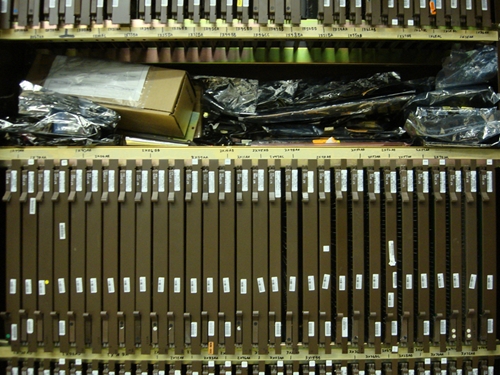How to Generate Revenue with Equipment Spares
 Imagine this scenario: your asset inventory is complete. Min/max levels for spare equipment have been calculated, enough critical assets are available and easily locatable on the shelves, equipment for repair has been sent out, and broken and outdated items have been removed. The warehouse data is updated, cataloged and cleaned, but yet, a few items remain without homes. These are duplicates of certain assets that are not critical or that exist in excess of well-calculated safety stock levels. What do you do?
Imagine this scenario: your asset inventory is complete. Min/max levels for spare equipment have been calculated, enough critical assets are available and easily locatable on the shelves, equipment for repair has been sent out, and broken and outdated items have been removed. The warehouse data is updated, cataloged and cleaned, but yet, a few items remain without homes. These are duplicates of certain assets that are not critical or that exist in excess of well-calculated safety stock levels. What do you do?
Simply let the assets sit around and take up space? From all we have discussed over the past few months on the Alden Updater, you can probably guess that is not the most efficient or effective use of real estate. Instead, another path is possible: turning spares into revenue. We have four tips to get you started.
1. Take a closer look at available assets
Perhaps that “spare” is not really a spare after all? After inventory and before anything else, you should take a closer look at equipment on-hand to determine how it could be used more efficiently rather than designating an asset as not worth keeping. Businesses may, for example, wish to re-calculate their min/max levels to more strategic levels. Simply using what is available can help a business “find” money in savings. Repurpose and redeployment, instead of buying new, lowers capital expenditures.
2. Sell those spare assets, while you can
In the telecommunications industry, developing countries are often in the market for working equipment that, in the U.S., may be considered obsolete. Smaller municipalities within the states may also make good buyers for your outdated equipment. Putting spares on the aftermarket is a smart way to turn excess into capital, as well as clear warehouse space for more mission-critical assets.
3. Fix, & never forget, spare assets
When something breaks, it often seems easier to simply replace the item wholesale rather than take the time and effort to repair it. While this may be an O.K. tactic for lower worth items, maintaining assets and equipment, rather than having an excess of them in the case of breakage, can lower a company’s overall material handling costs. That is more money in a business’s pocket and less spare equipment sitting around, waiting.
4. Release spares to make you speedier
Without the “noise” of equipment spares clogging warehouse space, businesses have the opportunity to maintain optimal inventory, which is just the right assets to get the job done, with no sifting, searching or pushing excesses aside to get at what is needed. Having the right equipment can save your company money, in that reducing clutter can improve turn up of new service and get new customers onboard and paying faster. As you well know, bringing to life a new service or product faster than the competition boosts sales.
Ready to get started with an asset management system geared toward the needs of ISP? Click here.

Comments